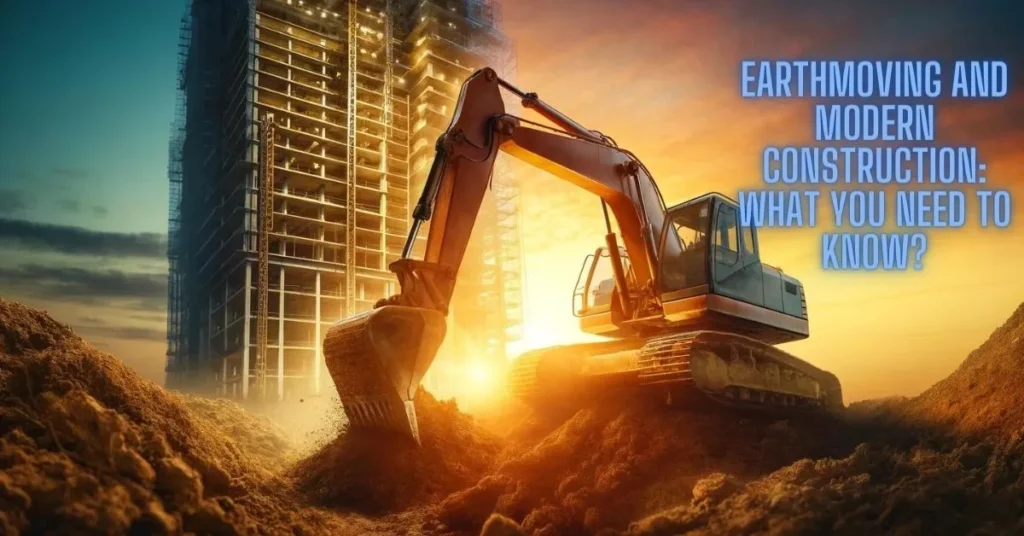In the dynamic world where modern construction is taking place, with skyscrapers reaching for the heavens and infrastructure networks connecting cities and countries, the importance of earthmoving cannot be underestimated. Earthmoving provides the foundation on which all construction is built. In this article, you will learn about the important role earthmoving has in modern construction. You will discover its significance, its methods, and the impact it has on the built environment.
Contents
The Backbone Construction: Understanding the Earthmoving
Earthmoving Gold Coast involves a wide variety of activities to prepare the ground for construction. This includes everything from removing plants and soil to excavating and grading terrain. Earthmoving, which is essential to preparing sites for construction and renovations of existing structures as well as shaping the landscape during various development projects, isn’t just for preparing new construction sites.
Foundation and Excavation
Excavation, one of the most important functions of earthmoving during construction, involves the removal of soil, rock, and other materials from the site to make room for structures such as foundations and underground utilities. It is important to understand that excavation is the first step of construction. This lays the foundations for everything else.
Before a structure can be built, it must be excavated at the correct depth and dimension to create a stable, level foundation.
Shaping Landscape
As well as excavation, earthmoving may also be used to contour terrain and shape the landscape according to the requirements of the project. This can include grading. This is the process of leveling out or sloping down the land in order for it to have the desired elevation.
Grading can be essential to ensuring water runoff, preventing erosion, and creating a safe working environment. Grading is crucial to the shaping of the built environment.
Infrastructure Development
Earthmoving is essential to the development and construction of infrastructures. These projects often require earthmoving operations that are extensive to clear land for excavation, trenches and underground tunnels.
In road construction, for instance, earthmoving is used to level the ground, cut through mountains, and fill in valleys to create a smooth, stable surface. In bridge construction, earthmoving equipment is used to excavate piers, abutments, or foundations. It can also be used to build approaches and embankments.
Earthmoving in Demolition
While earthmoving focuses primarily on the preparation of sites for construction, it plays a vital role in the destruction of existing structures. Demolition involves dismantling or deconstructing buildings and other structures. This is done to make room for new construction, or remove old or unsafe structures.
Safety Concerns in Demolition
Safety is paramount during demolition work, as it involves inherent hazards and risks. It is vital to have proper training, planning and equipment in place to ensure worker safety and that of the surrounding area.
Before beginning any demolition project, a thorough assessment is done to identify potential hazards. For example, structural weakness, hazardous materials or environmental concerns. This information helps to develop a comprehensive deconstruction plan which includes the sequence, safety protocols and mitigations measures.
Environmental Considerations
In addition to safety issues, environmental considerations also play a major role in the demolition process. It is essential to manage the removal and disposal process of hazardous materials, including asbestos, lead paint, and PCBs, in order to prevent contamination of water, soil, and air.
Likewise, efforts should be taken to minimize the production of dust, sound, and vibrations during demolition activities in order to mitigate their impact on nearby residents as well as businesses and eco-systems.
In Conclusion
Earthmoving encompasses many activities that are crucial for preparing construction sites, forming landscapes, as well as developing infrastructure. Earthmoving can be used at any stage of construction. It is crucial for building foundations, whether it’s excavation, grading or debris removal.
As construction methods, technologies, and building materials continue to change, the importance and value of earthmoving continues to increase, providing a foundation upon which future generations will innovate and build. Understanding earthmoving in relation to demolition will allow us to better appreciate its vital role in shaping our environment.

